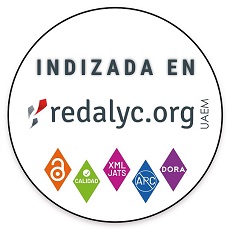Incremental Innovation versus Discontinuous Innovation: An Analysis of the Fuzzy Front End
INNOVACIÓN INCREMENTAL VERSUS ALTO GRADO DE INNOVACIÓN: UN ANÁLISIS DEL FUZZY FRONT END
INOVAÇÃO INCREMENTAL VERSUS INOVAÇÃO RADICAL: UMA ANÁLISE FUZZY FRONT END
DOI:
https://doi.org/10.15446/innovar.v34n92.101160Palabras clave:
Fuzzy Front End, Product Development, High degree of innovation, Incremental Innovation, Radical Innovation (en)Fuzzy front end, innovación discontinua, innovación incremental, desarrollo de productos, innovación radical (es)
fuzzy front end, inovação descontínua, inovação incremental, desenvolvimento de produtos, inovação radical. (pt)
Descargas
Companies innovate to increase revenues or reduce costs. The literature identifies two types of innovation approaches: incremental innovation, when an enterprise uses and “exploits” its current competencies, and radical innovation, which points out a company’s need to develop and “explore” new competencies. In product design and development through discontinuous innovation, fuzzy front end (ffe)—the most critical stage due to the difficulty of understanding and articulating the opportunities detected—has a decisive impact. Thus, through literature analysis, this reflective article allows a deeper understanding of ffe from two dimensions: i) Degree of innovation—incremental innovation vs. discontinuous innovation— and ii) Time—a project stage. To that end, we propose a framework of reference for ffe construct. The results enable academia to reduce the gap around the ffe construct and companies involved in innovation projects to better understand the nature of a project according to the degree of innovation of a new product, as well as how to proceed in order to reduce uncertainties; insights that could ultimately increase the chances of a new product becoming successful.
Las empresas innovan con el fin de aumentar sus ingresos o reducir costos. La literatura identifica dos tipos de enfoques de innovación: la innovación incremental, cuando una empresa utiliza y “explota” sus competencias actuales, y la innovación radical, que señala la necesidad de desarrollar y “explorar” nuevas competencias. En este contexto, el fuzzy front end (ffe) —la etapa más crítica debido a la dificultad de comprender y articular las oportunidades identificadas— tiene un papel determinante dentro del proceso de diseño y desarrollo de productos bajo el enfoque de innovación discontinua. Por lo tanto, mediante una revisión de la literatura, este artículo de reflexión pretende una comprensión más profunda del ffe desde dos dimensiones: i) grado de innovación —innovación incremental vs. innovación discontinua— y ii) tiempo —una etapa del proceso de innovación. Para ello, proponemos un marco de referencia para la construcción del ffe. Los resultados permiten a la academia reducir la brecha en torno a la construcción del ffe y a las empresas involucradas en proyectos de innovación comprender de una mejor forma la naturaleza de este tipo de iniciativas según el grado de innovación de un nuevo producto, buscando mitigar la incertidumbre. Los hallazgos de esta investigación podrían contribuir a aumentar las posibilidades de éxito de un nuevo producto.
As empresas inovam com o objetivo de aumentar as receitas ou reduzir os custos. A literatura identifica dois tipos de abordagens de inovação: a inovação incremental, quando uma empresa utiliza e “explora” as suas competências existentes, e a inovação radical, que aponta para a necessidade de desenvolver e “explorar” novas competências. Neste contexto, o fuzzy front end (ffe) — a fase mais crítica devido à dificuldade de compreensão e articulação das oportunidades identificadas — desempenha um papel determinante no processo de criação e desenvolvimento de produtos no âmbito da abordagem de inovação descontínua. Assim, através de uma revisão da literatura, este artigo de reflexão tem como objetivo aprofundar a compreensão do ffe a partir de duas dimensões: 1) grau de inovação — inovação incremental vs. inovação descontínua — e 2) tempo — uma fase do processo de inovação. Com esse objetivo, propomos um quadro de referência para a construção do ffe. Os resultados permitem que a academia reduza a lacuna em torno da construção da FFE e que as empresas envolvidas em projetos de inovação compreendam melhor a natureza desse tipo de iniciativa de acordo com o grau de inovação de um novo produto, buscando mitigar a incerteza. As conclusões desta pesquisa poderão contribuir para aumentar as probabilidades de que um novo produto tenha sucesso.
Referencias
Alencar, E. M. (2003). Criatividade múltiplas perspectivas (3rd ed.). UnB.
Amabile, T. M. (1988). How to kill creativity. Harvard Business Review, 57(3), 77–87. https://doi.org/10.2307/4151453 DOI: https://doi.org/10.2307/4151453
Amabile, T. M. (1996). Creativity in context. Westview Press.
Amabile, T. M. (2012). Componential Theory of Creativity. In Encyclopedia of Management Theory. SAGE Publications, Ltd. https://doi.org/10.4135/9781452276090.n50 DOI: https://doi.org/10.4135/9781452276090.n50
Amabile, T. M., & Pratt, M. G. (2016). The dynamic componential model of creativity and innovation in organizations: Making progress, making meaning. Research in Organizational Behavior, 36, 157–183. https://doi.org/10.1016/j.riob.2016.10.001 DOI: https://doi.org/10.1016/j.riob.2016.10.001
Asimow, M. (1962). Introduction to Design. Prentice Hall.
Bessant, J., Öberg, C., & Trifilova, A. (2014). Framing problems in radical innovation. Industrial Marketing Management, 43, 1284–1292. https://doi.org/10.1016/j.indmarman.2014.09.003 DOI: https://doi.org/10.1016/j.indmarman.2014.09.003
Boehm, B. W. (1988). A Spiral Model of Software Development and Enhancement. In Computer (Vol. 21, Issue 5, pp. 61–72). https://doi.org/10.1109/2.59 DOI: https://doi.org/10.1109/2.59
Borgianni, Y., Cascini, G., & Rotini, F. (2018). Investigating the future of the fuzzy front end: towards a change of paradigm in the very early design phases? Journal of Engineering Design, 29(11), 644–664. https://doi.org/10.1080/09544828.2018.1520971 DOI: https://doi.org/10.1080/09544828.2018.1520971
Bourgeois-Bougrine, S., Buisine, S., Vandendriessche, C., Glaveanu, V., & Lubart, T. (2017). Engineering students’ use of creativity and development tools in conceptual product design: What, when and how? Thinking Skills and Creativity, 24, 104–117. https://doi.org/10.1016/j.tsc.2017.02.016 DOI: https://doi.org/10.1016/j.tsc.2017.02.016
Brem, A., & Voigt, K.-I. (2009). Integration of market pull and technology push in the corporate front end and innovation management—Insights from the German software industry. Technovation, 29(5), 351–367. https://doi.org/10.1016/j.technovation.2008.06.003 DOI: https://doi.org/10.1016/j.technovation.2008.06.003
Brentani, U., & Reid, S. E. (2012). The fuzzy front-end of discontinuous innovation: Insights for research and management. Journal of Product Innovation Management, 29(1), 70–87. https://doi.org/10.1111/j.1540-5885.2011.00879.x DOI: https://doi.org/10.1111/j.1540-5885.2011.00879.x
Brun, E. C. (2016). Ambidexterity and Ambiguity: The Link between Ambiguity Management and Contextual Ambidexterity in Innovation. International Journal of Innovation and Technology Management, 13(4), 1–29. https://doi.org/10.1142/S0219877016500139 DOI: https://doi.org/10.1142/S0219877016500139
Buchanan, R. (1992). Wicked Problems in Design Thinking. Design Issues, 8(2), 5–21. https://doi.org/10.5040/9781474282932.0019 DOI: https://doi.org/10.2307/1511637
Cagan, J., & Vogel, C. M. (2002). Creating breakthrough products. Prentice Hall Inc.
Canuto da Silva, G., & Kaminski, P. C. (2017). Proposal of framework to managing the automotive product development process. Cogent Engineering, 4(1), 1317318. https://doi.org/10.1080/23311916.2017.1317318 DOI: https://doi.org/10.1080/23311916.2017.1317318
Christensen, C. (1997). The Innovator’s Dilemma. Harvard Business School Press.
Cooper, R. G. (1988). Predevelopment activities determine new product success. Industrial Marketing Management, 17(3), 237–247. https://doi.org/10.1016/0019-8501(88)90007-7 DOI: https://doi.org/10.1016/0019-8501(88)90007-7
Cooper, R. G. (2014). What’s next? After stage-gate. Research Technology Management, 57(1), 20–31. https://doi.org/10.5437/08956308X5606963 DOI: https://doi.org/10.5437/08956308X5606963
Corazza, G. E., & Lubart, T. (2021). Intelligence and creativity: Mapping constructs on the space-time continuum. Journal of Intelligence, 9(1), 1–27. https://doi.org/10.3390/jintelligence9010001 DOI: https://doi.org/10.3390/jintelligence9010001
Costa, M. A. B., & Toledo, J. C. de. (2016). Análise dos modelos e atividades do pré-desenvolvimento: revisão bibliográfica sistemática. Gestão & Produção, 23(4), 704–717. https://doi.org/10.1590/0104-530x1888-15 DOI: https://doi.org/10.1590/0104-530x1888-15
Eppinger, S. D., Whitney, D. E., Smith, R. P., & Gebala, D. A. (1994). A model-based method for organizing tasks in product development. Research in Engineering Design, 6(1), 1–13. https://doi.org/10.1007/BF01588087 DOI: https://doi.org/10.1007/BF01588087
Evans, J. H. (1959). Basic design concepts. Journal of the American Society for Naval Engineers, 71(4), 671–678. https://doi.org/10.1111/j.1559-3584.1959.tb01836.x DOI: https://doi.org/10.1111/j.1559-3584.1959.tb01836.x
Fernández, E., & Valle, S. (2018). Tecnología disruptiva: la derrota de las empresas establecidas. Innovar, 28(70), 9–22. https://doi.org/10.15446/innovar.v28n70.74404 DOI: https://doi.org/10.15446/innovar.v28n70.74404
Florén, H., Frishammar, J., Parida, V., & Wincent, J. (2017). Critical success factors in early new product development: a review and a conceptual model. International Entrepreneurship and Management Journal, 14(2), 411–427. https://doi.org/10.1007/s11365-017-0458-3 DOI: https://doi.org/10.1007/s11365-017-0458-3
Frishammar, J., Dahlskog, E., Krumlinde, C., & Yazgan, K. (2016). The Front End of Radical Innovation: A Case Study of Idea and Concept Development at Prime Group. Creativity and Innovation Management, 25(2), 179–198. https://doi.org/10.1111/caim.12175 DOI: https://doi.org/10.1111/caim.12175
Frishammar, J., Florén, H., & Wincent, J. (2011). Beyond managing uncertainty: Insights from studying equivocality in the fuzzy front end of product and process innovation projects. IEEE Transactions on Engineering Management, 58(3), 551–563. https://doi.org/10.1109/TEM.2010.2095017 DOI: https://doi.org/10.1109/TEM.2010.2095017
Frishammar, J., Lichtenthaler, U., & Richtnér, A. (2013). Managing process development: Key issues and dimensions in the front end. R and D Management, 43(3), 213–226. https://doi.org/10.1111/radm.12011 DOI: https://doi.org/10.1111/radm.12011
Garcia, R., & Calantone, R. (2002). A critical look at technological innovation typology and innovativeness terminology: a literature review. Journal of Product Innovation Management, 19(2), 110–132. https://doi.org/10.1111/1540-5885.1920110 DOI: https://doi.org/10.1111/1540-5885.1920110
Gassmann, O., & Schweitzer, F. (2014). Management of the Fuzzy Front End of Innovation (O. Gassmann & F. Schweitzer (eds.)). Springer International Publishing. https://doi.org/10.1007/978-3-319-01056-4 DOI: https://doi.org/10.1007/978-3-319-01056-4
Haeser, L. F., Vizioli, R., & Kaminski, P. C. (2015). Comparative analysis of creative process methodologies for products development a case study of the large scale toys production. Product Management & Development, 13(1), 22–30. https://doi.org/10.4322/pmd.2015.005 DOI: https://doi.org/10.4322/pmd.2015.005
Heck, J., Rittiner, F., Steinert, M., & Meboldt, M. (2016). Iteration-based Performance Measurement in the Fuzzy Front End of PDPs. Procedia CIRP, 50, 14–19. https://doi.org/10.1016/j.procir.2016.04.183 DOI: https://doi.org/10.1016/j.procir.2016.04.183
Heck, J., Steinert, M., & Meboldt, M. (2020). Advancing empirical evidence of iteration stereotypes in the fuzzy front end of product development processes. Procedia CIRP, 91, 61–70. https://doi.org/10.1016/j.procir.2020.02.151 DOI: https://doi.org/10.1016/j.procir.2020.02.151
Hoonsopon, D., & Puriwat, W. (2021). Organizational Agility: Key to the Success of New Product Development. IEEE Transactions on Engineering Management, 68(6), 1722–1733. https://doi.org/10.1109/TEM.2019.2929500 DOI: https://doi.org/10.1109/TEM.2019.2929500
Huang, Z., Ahmed, C., & Mickael, G. (2020). A model for supporting the ideas screening during front end of the innovation process based on combination of methods of EcaTRIZ, AHP, and SWOT. Concurrent Engineering Research and Applications, 28(2), 89–96. https://doi.org/10.1177/1063293X20911165 DOI: https://doi.org/10.1177/1063293X20911165
Joachim, V., & Spieth, P. (2020). What Does Front-End Research Build on? A Cocitation Analysis of the Intellectual Background and Potential Future Research Avenues. IEEE Transactions on Engineering Management, 67(1), 105–121. https://doi.org/10.1109/TEM.2018.2865496 DOI: https://doi.org/10.1109/TEM.2018.2865496
Kaminski, P. C. (2000). Desenvolvendo Produtos com Planejamento Criatividade e Qualidade. LTC.
Khurana, A., & Rosenthal, S. R. (1997). Integrating the fuzzy front end of new product development. IEEE Engineering Management Review, 25(4), 35–49.
Khurana, A., & Rosenthal, S. R. (1998). Towards holistic “front ends” in new product development. Journal of Product Innovation Management, 15(1), 57–74. https://doi.org/10.1016/S0737-6782(97)00066-0 DOI: https://doi.org/10.1111/1540-5885.1510057
Kim, J., & Wilemon, D. (2002). Focusing the fuzzy front-end in new product development. R and D Management, 32(4), 269–279. https://doi.org/10.1111/1467-9310.00259 DOI: https://doi.org/10.1111/1467-9310.00259
Koen, P. A., Bertels, H. M. J., & Kleinschmidt, E. (2014). Managing the front end of innovation-part I: Results from a three-year study. Research Technology Management, 57(2), 34–43. https://doi.org/10.5437/08956308X5702145
Koen, P., Ajamian, G., Burkart, R., Clamen, A., Davidson, J., D’Amore, R., Elkins, C., Herald, K., Incorvia, M., Johnson, A., Karol, R., Seibert, R., Slavejkov, A., & Wagner, K. (2001). Providing clarity and a common language to the “fuzzy front end.” Research Technology Management, 44(2), 46–55. https://doi.org/10.1080/08956308.2001.11671418 DOI: https://doi.org/10.1080/08956308.2001.11671418
Lavie, D., Stettner, U., & Tushman, M. L. (2010). Exploration and exploitation within and across organizations. Academy of Management Annals, 4(1), 109–155. https://doi.org/10.1080/19416521003691287 DOI: https://doi.org/10.5465/19416521003691287
Leifer, R., O’Connor, G. C., & Rice, M. (2002). A implementação de inovação radical em empresas maduras. Revista de Administração de Empresas, 42(2), 17–30. https://doi.org/10.1590/S0034-75902002000200016 DOI: https://doi.org/10.1590/S0034-75902002000200016
Lubart, T. (2007). Psicologia da criatividade. Artmed.
March, J. G. (1991). Exploration and Exploitation in Organizational Learning. Organization Science, 2(1), 71–87. https://doi.org/10.1287/orsc.2.1.71 DOI: https://doi.org/10.1287/orsc.2.1.71
Markham, S. K. (2013). The impact of front-end innovation activities on product performance. Journal of Product Innovation Management, 30, 77–92. https://doi.org/10.1111/jpim.12065 DOI: https://doi.org/10.1111/jpim.12065
Mazaral, J. A., Diego, J. A., & Artacho, M. A. (2004). Diseño de productos metodos y tecnicas. Alfaomega.
O’Connor, G. C., Ravichandran, T., & Robeson, D. (2008). Risk management through learning: Management practices for radical innovation success. The Journal of High Technology Management Research, 19(1), 70–82. https://doi.org/10.1016/j.hitech.2008.06.003 DOI: https://doi.org/10.1016/j.hitech.2008.06.003
O’Connor, G. C., & Rice, M. P. (2013). A Comprehensive Model of Uncertainty Associated with Radical Innovation. Journal of Product Innovation Management, 30, 2–18. https://doi.org/10.1111/jpim.12060 DOI: https://doi.org/10.1111/jpim.12060
O’Reilly, C. A., & Tushman, M. L. (2008). Ambidexterity as a dynamic capability: Resolving the innovator’s dilemma. Research in Organizational Behavior, 28(2083), 185–206. https://doi.org/10.1016/j.riob.2008.06.002 DOI: https://doi.org/10.1016/j.riob.2008.06.002
O’Reilly, C. A., & Tushman, M. L. (2013). Organizational Ambidexterity: Past, Present, and Future. Academy of Management Perspectives, 27(4), 324–338. https://doi.org/10.5465/amp.2013.0025 DOI: https://doi.org/10.5465/amp.2013.0025
O Connor, G. C., Leifer, R., Paulson, A. S., & Peters, L. S. (2008). Building a capability for breakthrough innovation. John Wiley & Sons, Inc.
Oliveira, A. C., & Kaminski, P. C. (2012). A reference model to determine the degree of maturity in the product development process of industrial SMEs. Technovation, 32(12), 671–680. https://doi.org/10.1016/j.technovation.2012.08.001 DOI: https://doi.org/10.1016/j.technovation.2012.08.001
Oliveira, M. G., Mendes, G. H. de S., & Mendes Serrano, K. (2022). Front-end of innovation: a systematic review and lifecycle analysis. European Journal of Innovation Management, 2020. https://doi.org/10.1108/EJIM-01-2022-0047 DOI: https://doi.org/10.1108/EJIM-01-2022-0047
Olszewski, M. (2022). Boosting creativity in co-creation with consumers in the fuzzy front-end of new product development: A literature review and organising framework. E-Mentor, 94(2), 36–47. https://doi.org/10.15219/em94.1563 DOI: https://doi.org/10.15219/em94.1563
Park, D., Han, J., & Childs, P. R. N. (2021). 266 Fuzzy front-end studies: current state and future directions for new product development. In Research in Engineering Design (Vol. 32, Issue 3). Springer London. https://doi.org/10.1007/s00163-021-00365-w DOI: https://doi.org/10.1007/s00163-021-00365-w
Reid, S. E., & Brentani, U. (2004). The fuzzy front end of new product development for discontinuous innovations: A theoretical model. Journal of Product Innovation Management, 21(3), 170–184. https://doi.org/10.1111/j.0737-6782.2004.00068.x DOI: https://doi.org/10.1111/j.0737-6782.2004.00068.x
Reid, S. E., & Brentani, U. (2010). Market vision and market visioning competence: Impact on early performance for radically new, high-tech products. Journal of Product Innovation Management, 27(4), 500–518. https://doi.org/10.1111/j.1540-5885.2010.00732.x DOI: https://doi.org/10.1111/j.1540-5885.2010.00732.x
Reid, S. E., Brentani, U., & Kleinschmidt, E. J. (2014). Divergent thinking and market visioning competence: An early front-end radical innovation success typology. Industrial Marketing Management, 43(8), 1351–1361. https://doi.org/10.1016/j.indmarman.2014.08.011 DOI: https://doi.org/10.1016/j.indmarman.2014.08.011
Reinertsen, D. G., & Smith, P. G. (1991). The Strategist’s Role in Shortening Product Development. Journal of Business Strategy, 12(4), 18–22. https://doi.org/10.1108/eb039425 DOI: https://doi.org/10.1108/eb039425
Riel, A., Neumann, M., & Tichkiewitch, S. (2013). Structuring the early fuzzy front-end to manage ideation for new product development. CIRP Annals - Manufacturing Technology, 62(1), 107–110. https://doi.org/10.1016/j.cirp.2013.03.128 DOI: https://doi.org/10.1016/j.cirp.2013.03.128
Rozenfeld, H., Forcellini, F. A., Amaral, D. C., Toledo, J. C., Silva, S. L., Alliprandini, D. H., & Scalice, R. K. (2006). Gestão de desenvolvimento de produtos: uma referencia para melhoria do processo. Saraiva.
Salerno, M. S., & Gomes, L. A. de V. (2018). Gestão da inovação mais radical. Elsevier Editora.
Sawyer, K. (2012). Explaining Creativity: The Science of Human Innovation (2nd ed.). Oxford university press.
Seclen-Luna, J. P., & López-Valladares, H. (2020). Influencia del uso de herramientas en la gestión de la fase temprana del proceso de innovación de productos. Innovar, 30(76), 119–130. https://doi.org/10.15446/innovar.v30n76.85217 DOI: https://doi.org/10.15446/innovar.v30n76.85217
Silva, R. H., Kaminski, P. C., & Armellini, F. (2020). Improving new product development innovation effectiveness by using problem solving tools during the conceptual development phase: Integrating Design Thinking and TRIZ. Creativity and Innovation Management, 29(4), 685–700. https://doi.org/10.1111/caim.12399 DOI: https://doi.org/10.1111/caim.12399
Sternberg, R. (2010). Psicologia Cognitiva. cegage Lernign Edições Ltda.
Takey, S. M., & Carvalho, M. M. (2016). Fuzzy front end of systemic innovations: A conceptual framework based on a systematic literature review. Technological Forecasting and Social Change, 111, 97–109. https://doi.org/10.1016/j.techfore.2016.06.011 DOI: https://doi.org/10.1016/j.techfore.2016.06.011
Tatikonda, M. V, & Rosenthal, S. R. (2000). Successful execution of product development projects: Balancing firmness and flexibility in the innovation process. Journal of Operations Management, 18(4), 401–425. https://doi.org/10.1016/S0272-6963(00)00028-0 DOI: https://doi.org/10.1016/S0272-6963(00)00028-0
Tushman, M. L., & O’Reilly, C. A. (1996). Ambidextrous Organizations: Managing Evolutionary and Revolutionary Change. California Management Review, 38(4), 8–29. https://doi.org/10.2307/41165852 DOI: https://doi.org/10.2307/41165852
Ummar, R., & Saleem, S. (2020). Thematic Ideation: A Superior Supplementary Concept in Creativity and Innovation. SAGE Open, 10(3). https://doi.org/10.1177/2158244020947429 DOI: https://doi.org/10.1177/2158244020947429
Unger, D., & Eppinger, S. (2011). Improving product development process design : a method for managing information flows , risks , and iterations. Journal of Engineering Design, 22(10), 689–699. https://doi.org/10.1080/09544828.2010.524886 DOI: https://doi.org/10.1080/09544828.2010.524886
Uribe Ocampo, J., & Kaminski, P. C. (2019a). Divergencias y convergencias de las metodologías triz y design thinking en el contexto del fuzzy front end. Ingenio 2019.
Uribe Ocampo, J., & Kaminski, P. C. (2019b). Medical device development, from technical design to integrated product development. Journal of Medical Engineering and Technology, 43(5), 287–304. https://doi.org/10.1080/03091902.2019.1653393 DOI: https://doi.org/10.1080/03091902.2019.1653393
Uribe Ocampo, J., Vizioli, R., & Kaminski, P. C. (2015). Design centrado no usuário como fundamento do fuzzy front end. 10 CBGDP, 1–14.
Vizioli, R. (2019). Integração da Engenharia do Valor e do “Design Thinking” no processo de desenvolvimento de produtos. Universidade de São Paulo.
Vizioli, R., & Kaminski, P. C. (2017). Problem definition as a stimulus to the creative process: Analysis of a classroom exercise. Journal of Technology and Science Education, 7(3), 274–290. https://doi.org/10.3926/jotse.175 DOI: https://doi.org/10.3926/jotse.175
Whitney, D. W. (2007). Assemble a Technology Development Toolkit. Research-Technology Management, 50(5). DOI: https://doi.org/10.1080/08956308.2007.11657462
Zaragoza-Sáez, P. del C., Claver-Cortés, E., Marco-Lajara, B., & Úbeda-García, M. (2020). Organizational ambidexterity in subsidiaries of knowledge-intensive sectors. Estudios Gerenciales, 36(157), 473–483. https://doi.org/10.18046/j.estger.2020.157.3906 DOI: https://doi.org/10.18046/j.estger.2020.157.3906
Cómo citar
APA
ACM
ACS
ABNT
Chicago
Harvard
IEEE
MLA
Turabian
Vancouver
Descargar cita
Licencia
Derechos de autor 2023 Innovar

Esta obra está bajo una licencia internacional Creative Commons Atribución-NoComercial-SinDerivadas 4.0.
Todos los artículos publicados por Innovar se encuentran disponibles globalmente con acceso abierto y licenciados bajo los términos de Creative Commons Atribución-No_Comercial-Sin_Derivadas 4.0 Internacional (CC BY-NC-ND 4.0).
Una vez seleccionados los artículos para un número, y antes de iniciar la etapa de cuidado y producción editorial, los autores deben firmar una cesión de derechos patrimoniales de su obra. Innovar se ciñe a las normas colombianas en materia de derechos de autor.
El material de esta revista puede ser reproducido o citado con carácter académico, citando la fuente.
Esta obra está bajo una Licencia Creative Commons:






















